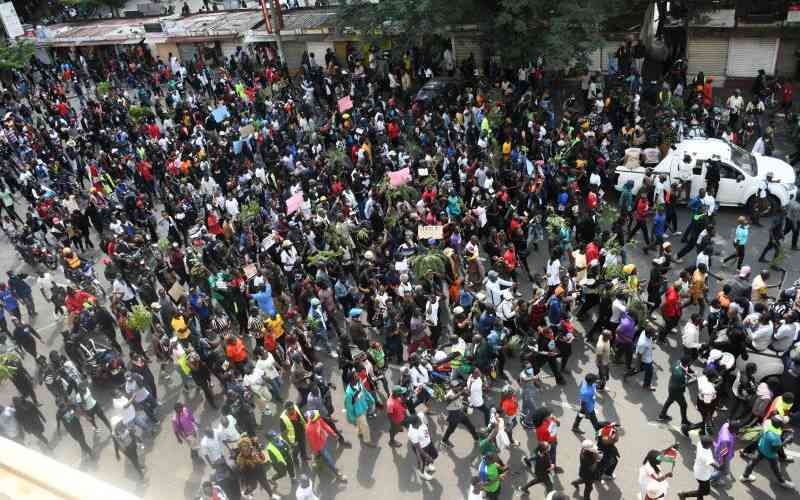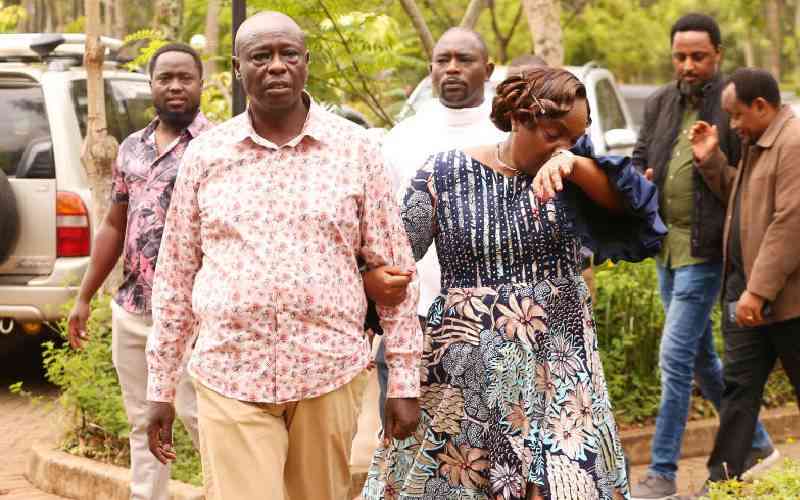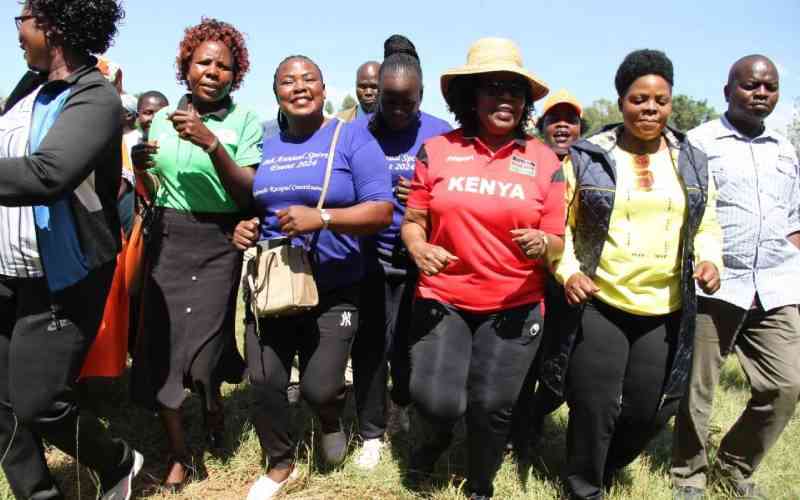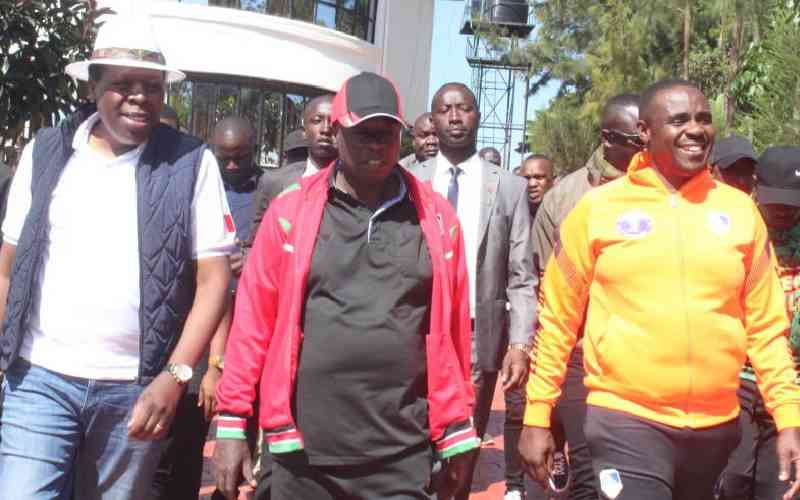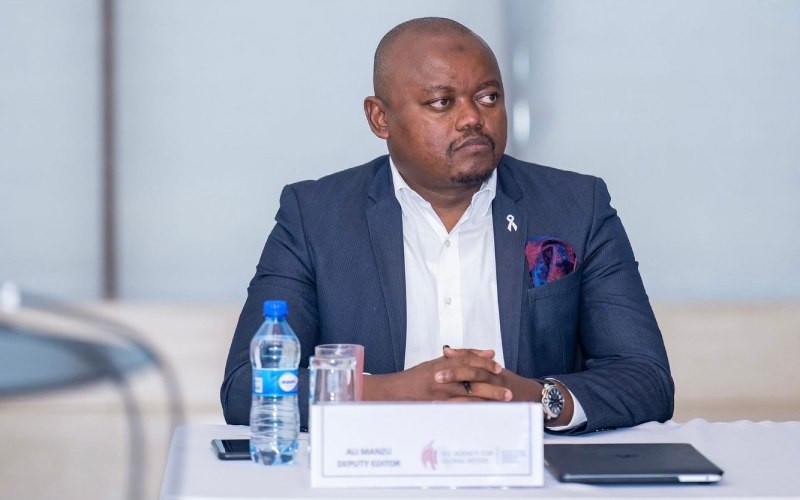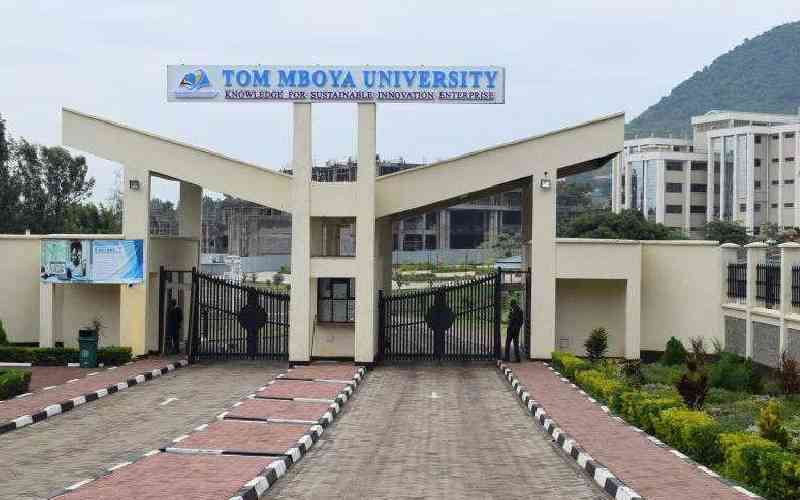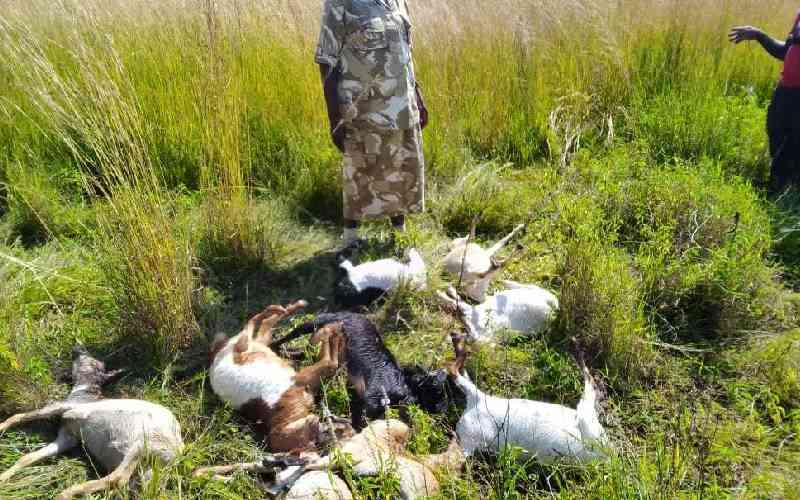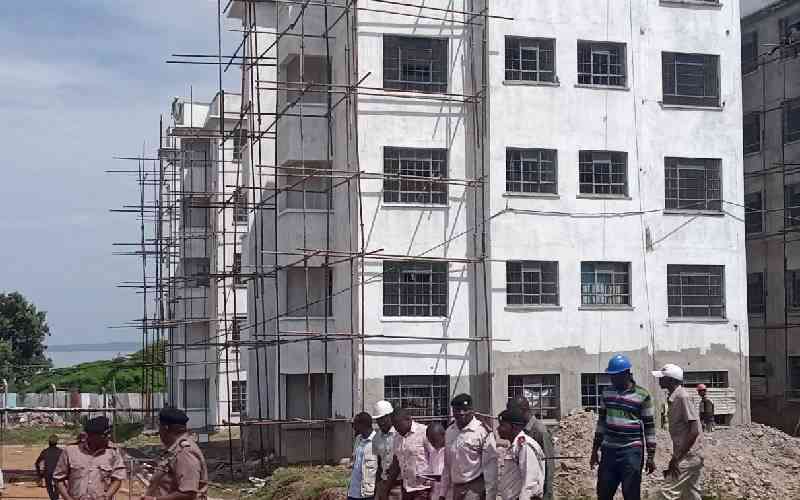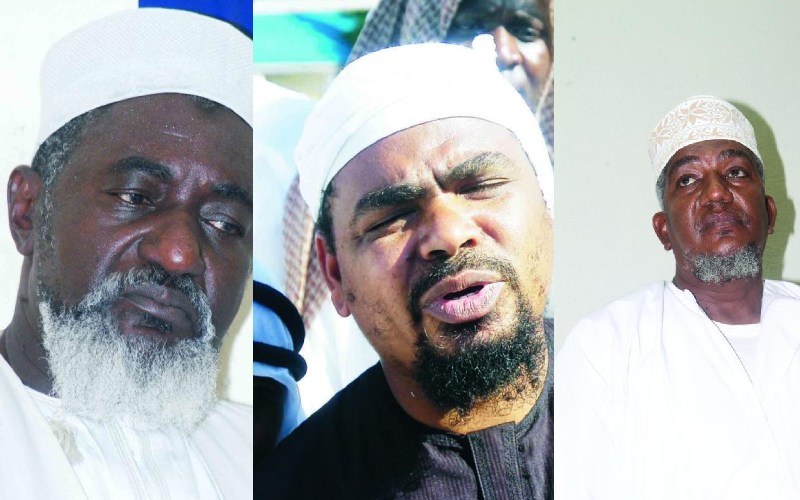
Events of 1990, the year Sheikh Aboud Rogo led radical clerics out of the Islamic Party of Kenya (IPK) and 2012 when an assassin ended his life, appear to have set Coast to its dark years of killings.
Before Sheikh Rogo shot into the limelight, however, reports indicate that most killings of the 1990s at Coast were linked to the drug trade.
But after Ibrahim Akasha was gunned down in Amsterdam in 2000 and his son, and heir, Kamaldin Akasha, fell to the assassin’s bullet two years later at Makupa, Mombasa, a new wave of crime emerged at the Coast.
The killings witnessed during Akasha’s reign of the criminal underworld at the Coast, however shocking, pales in comparison to the carnage that followed the killing of Rogo.
Security agents, clerics, tycoons and suspected terrorists have not been spared in this new wave of killings that began in 2012. Multiple reports indicate that 22 clerics have been killed since 2012.
Mombasa lawyer Abubakar Yusuf said some of the killings are unsolved. He said families have lost hope of getting justice for their loved ones. They have resigned to the fate that there will be no closure.
“Most of those I speak with blame the State. They have accepted that it will take the goodwill of the State to solve these cases,” said Mr Yusuf who has represented most of these families in court.
Human rights groups have also given up. Mr Francis Auma, an officer for Muslims for Human Rights (MUHURI) said “we don’t go to court to get justice but record these assassinations.”
“It is exhausting to continue filing habeas corpus to compel police to produce victims of enforced disappearance or demonstrate against assassinations and nothing happens,” he said.
Over the years, State officials have strenuously denied allegations that security agents were behind the killing of suspected radical Muslim clerics or their followers at the Coast.
“To end this ping-pong blame game the government should invite a special rapporteur from the United Nations to investigate all these killings. Families want closure,” said Auma.
Influential
An analysis of the cases of killings that have happened since 2011 points to three motives – terror, drugs or business rivalry. They are also linked to one man - Sheikh Aboud Rogo.
After the State refused to register IPK, according to scholarly articles, Rogo and his peer Abubakar Sharif Ahmed alias Makaburi seized control of key mosques in Mombasa to propagate jihad.
By end of the 1990s, Rogo's incendiary sermons attracted several young Muslims like Fazul Mohamed, Ahmed Salim Swedan, Haruni Bamusa, Fumo Mohamed Fumo and Saleh Ali Saleh Nabhan. These and others, security agents believe, ignited the fire of radicalism and terror at the Coast which has led to several killings.
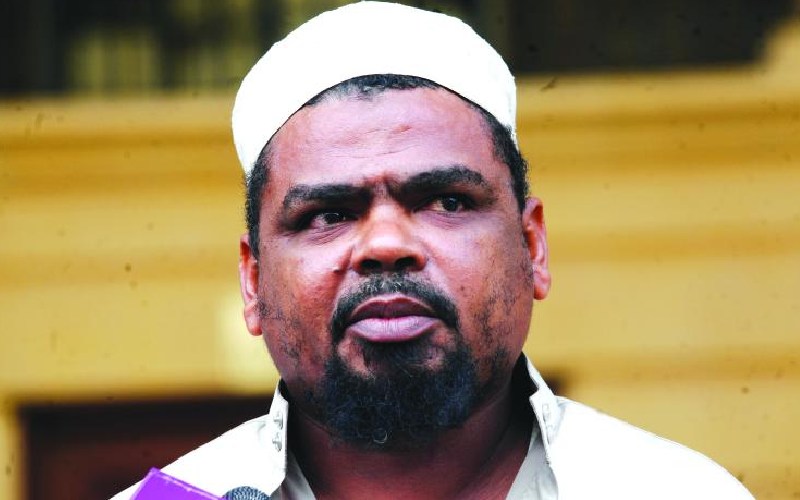
One of the most chilling killings was that of billionaire Mr Shahid Pervez Butt who was sprayed with 25 bullets on July 11, 2014, in Changamwe, some 200 meters from a police station.
Mr Shahid who owned Modern Coast, a bus and trucking company in East Africa had just picked up his son at Moi International Airport in Mombasa and was travelling to Mombasa town when he met his assailants.
The six assassins who were said to be in a blue Toyota Probox opened fire and killed Butt on the spot. His son was however not injured in the brazen attack that took place a few metres from Changamwe Police Station.
Born in Lahore, Pakistan in 1956, Butt was a controversial figure within Muslim circles at the Coast.
Through his vast financial empire, estimated then to be worth close to Sh5 billion, and as a trustee of the Muslim Association, he had an immense influence among Muslims.
A year before he was killed, Butt was charged with bankrolling terrorism and violence. Moderate Muslim clerics also accused him of financing their ouster from Mosques in Mombasa.
Rivalry
One of the clerics who had openly differed with Butt, Sheikh Mohamed Idris was assassinated on June 10, 2014, exactly a month and a day after the tycoon had been killed.
A towering figure in Coast politics and religious circles, Sheikh Idris was the chair of the Council of Imams and Preachers of Kenya (CIPK) and had fallen out with the radical clerics at the Coast.
He had preached against radicalisation and issued a fatwa or edict saying the war in Somalia was not jihad and that Kenyan youths had no obligation to fight there.
Sheikh Idris blamed Butt for his October 2013 violent ouster from Sakina Mosque by youths that were linked to Rogo and his ideological soul mate Abubakar Sharif alias Makaburi.
Ironically, Idris was one of the radical Muslim clerics in the 1990s who would later establish CIPK to take over Sakina and other radical mosques at the Coast.
Days before he was assassinated, Idris told the Standard that he was a “walking corpse” and revealed that it was a matter of time before he was killed by the radical youths.
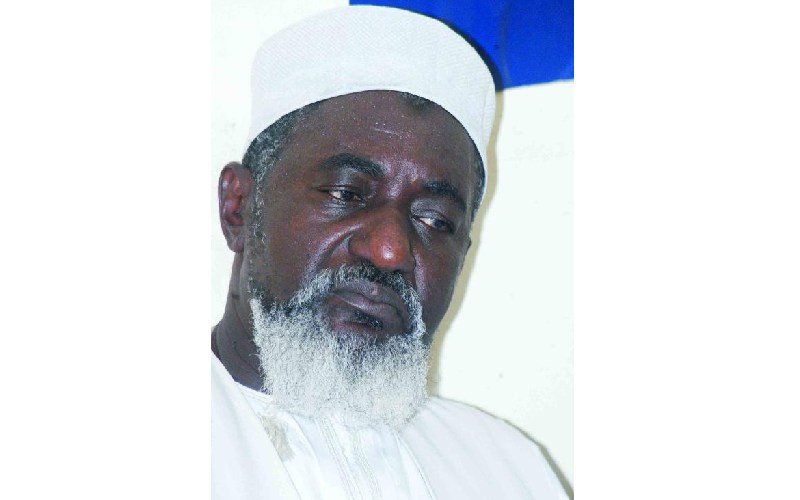
His relatives led by Mr Kassim Bakari told mourners in Msambweni that Idris knew that he will be killed “but was not ready to compromise his belief and stand against the radical clerics.”
In April 2016, a madrasah teacher, Mohamed Sudi Mohamed was sentenced to death for the murder of Sheikh Idris. This is after the prosecution proved that the firearm that was found with Sudi was the same that fired the bullet that killed Sheikh Idris.
But Idris’ murder was seen as a revenge attack over the daylight assassination of Makaburi on the fools day of 2014 outside Shanzu Law Courts along the Mombasa-Malindi highway.
Makaburi and Sheikh Ibrahim Amur were killed metres from where Rogo was killed. Two assassins dressed in white Kanzu’s sprayed them with bullets just minutes after stepping out of court.
Sheikh Rogo and Makaburi were joined at the hip. Both were listed on the United States, UN and United Kingdom (UK) list of sanctioned and designated terrorists.
They both praised Al Shabaab and Al-Qaida terror attacks across the globe and openly called on militants to join Al Shabaab to fight Kenyan soldiers who crossed into Somalia in 2011.

The late Sheikh Sharif Abubakar Makaburi. [File, Standard]
Significantly, most of the killings that took place before and after their deaths were blamed on the legion of their radical followers in Mombasa, Kwale, Lamu, Kilifi, and Nairobi counties.
Reports also indicated that Makaburi assumed the leadership of Al-Qaida terror cells like Al-Hijra in Nairobi and Jaysh Ayman after Rogo was assassinated on August 27, 2012.
Earlier, on April 10, 2012, Sheikh Mohammed Kassim who was Rogo’s companion had also been killed and his body was found in Kilifi.
His relatives said he was abducted from a matatu. Kassim was linked to the Machakos Country bus blast which killed six people and injured over 60.
On April 3, 2012, the body of Sheikh Samir Khan was found dumped in Tsavo Forest in Taita Taveta along the Mombasa-Nairobi highway three days after he had been reported missing.
Sheikh Khan who was also a confidant of Rogo was also facing several terror-related charges in Mombasa courts. He was linked to the recruitment of al-Shabaab fighters in Mombasa and Kwale.
Foot soldiers targeted
Other than the clerics, the killings targeted the radical sheikh foot soldiers. Some of them are said to have crossed to neighbouring Somalia for military training and returned as sleeper agents.
This included Mahir Khalid Riziki, who the military identified as the suicide bomber in Nairobi’s DusitD2 carnage in January 2019. He was an ardent follower of Rogo and Makaburi.
Riziki’s pathway to extremism was clearer. Born and bred in the Majengo area of Mombasa, Riziki worshipped at Musa Mosque during the era Rogo and other radical clerics preached there.
Other reports however indicated that he may have been recruited into Al Shabaab by Makaburi’s known ‘apostle’ Rashid Tumbo Kufungwa in 2013. But after the assassinations of Rogo and Makaburi, multiple sources indicate that he joined a terror cell that was based in Bondeni.
In Bondeni, he is said to have met the three notorious Shosi brothers. That is when the police in November 2014 placed him on the list of the most wanted in Mombasa.

The three Shosi brothers - Ismael, Idris alias Rasta and Ikrima - were also listed in the Mombasa list of the most wanted terrorists. Idris and Ismail have since been killed by the police.
Idris was killed by the police in 2014 at Bondeni. His brother Ismael took over the terror operations in Bondeni and Old Town areas of Mombasa where he spread terror.
On July 3, 2015, Ismael was linked to the assassination of a National Intelligence Service officer Hashim Shalman, 29, at Mombasa’s Old Town in Mombasa.
Shalman was heading home after prayers at the Hanisa Mosque, located off Abdel Nassir Road in Bondeni after two men clad in buibuis and wearing masks shot him at close range.
Described as a highly trained Al-Qaida assassin, Ismael was also linked to the brutal murder of a Russian and German tourist in July 2016 at the Old Town. He also shot and injured a police officer who was guarding Gulf Bank in Bondeni.
In 2016, Ismael was killed by the police inside the house of Ms Fatuma Masuo, the widow of another Al-Qaida operative Kassim Omollo in Mlaleo, in the Bakarani area.
A bomb expert, according to security officials, Omollo were among the first followers of Rogo and Makaburi who were killed in 2013 and 2012.
Others were Salim Mohammed Nero, who police described as a sharpshooter. He was killed in the Kiembeni estate, Mombasa on June 27, 2013.
In October of the same year, another close ally of Rogo, Sheikh Ibrahim Omar Ismail was also assassinated.
Ismael murder was linked to leadership rivalry between different terror cells in Mombasa and Kwale following the death of Rogo.
Ismael was driving along the Mombasa-Malindi highway when gunmen opened fire on their vehicle. Three people who were in the car, Gadaffi Mohammed (Shebe), Omar Aburumesia and Issa Abdalla also died on the spot.
In mid-July 2013, security officers in Mombasa claimed that Ismael had activated an al-Shabaab cell in Mtopanga estate in Kisauni, Mombasa to revenge for the killing of Rogo.
In December 2013, the body of Faiz Mohammed Rufai, a madrasah teacher in Malindi and a close friend of Ahmed Bakshueni, was found dumped on Mamburui beach in Magarini.
According to multiple security sources, Rufai was kidnapped by radical Muslim youths in the Ngomeni area, who had chopped off his head and dumped his body in the Indian Ocean.
“Rufai was accused of being a double agent for a terror group and security agents,” said a senior security officer who worked in Mombasa between 2011 and 2016.
Bakshueni was killed by three gunmen on a motorbike near Malindi police station. Like, his close ally, Rufai is said to have been killed because he worked with security agents.
But the followers of Rogo and Makaburi from Mombasa, Kilifi and Kwale would in June 2014 emerge under the banner of Jaysh Ayman to massacre 60 villagers in Mpeketoni, Lamu.
Other cases include that of Meshack Yebei, who was considered a critical witness at the International Criminal Court (ICC) in the case against Deputy President William Ruto.
His body was found at Man eaters along the Mombasa-Nairobi highway. Other past killings include that of Mohamed Salim Aliyan on May 7, 2014, in Malindi and Pastor Joshua Muteti on November 17, 2014, in Mombasa.
 The Standard Group Plc is a multi-media organization with investments in media platforms spanning newspaper print
operations, television, radio broadcasting, digital and online services. The Standard Group is recognized as a
leading multi-media house in Kenya with a key influence in matters of national and international interest.
The Standard Group Plc is a multi-media organization with investments in media platforms spanning newspaper print
operations, television, radio broadcasting, digital and online services. The Standard Group is recognized as a
leading multi-media house in Kenya with a key influence in matters of national and international interest.


